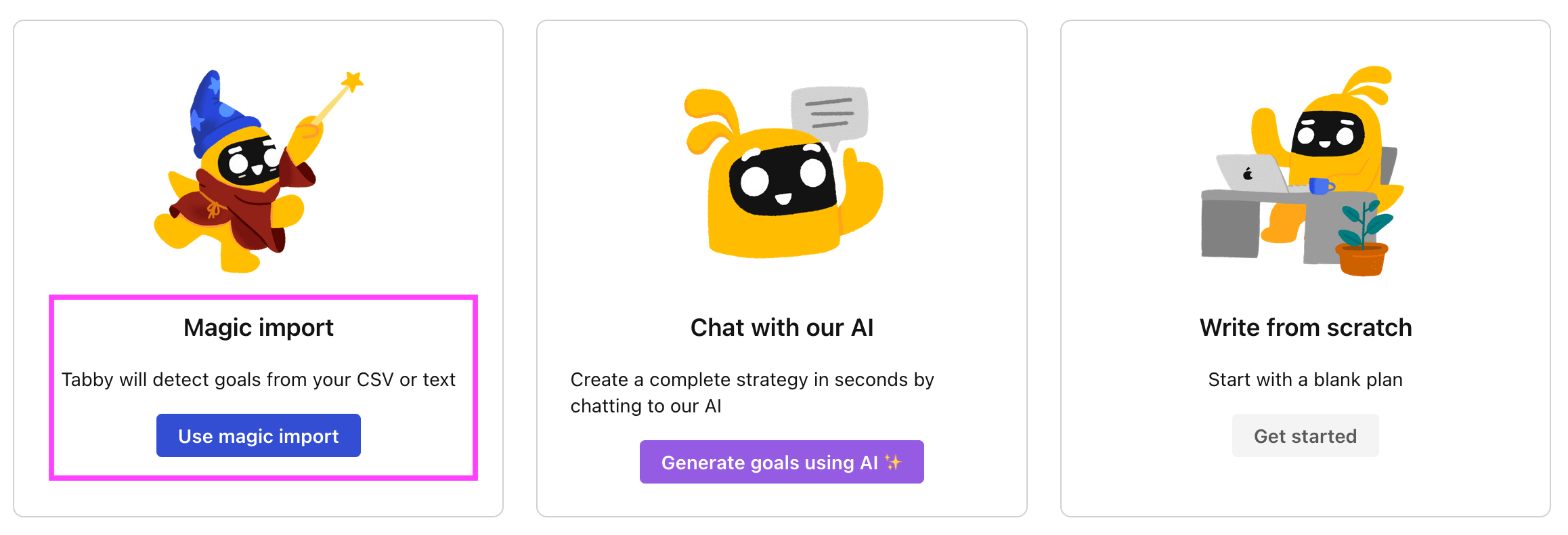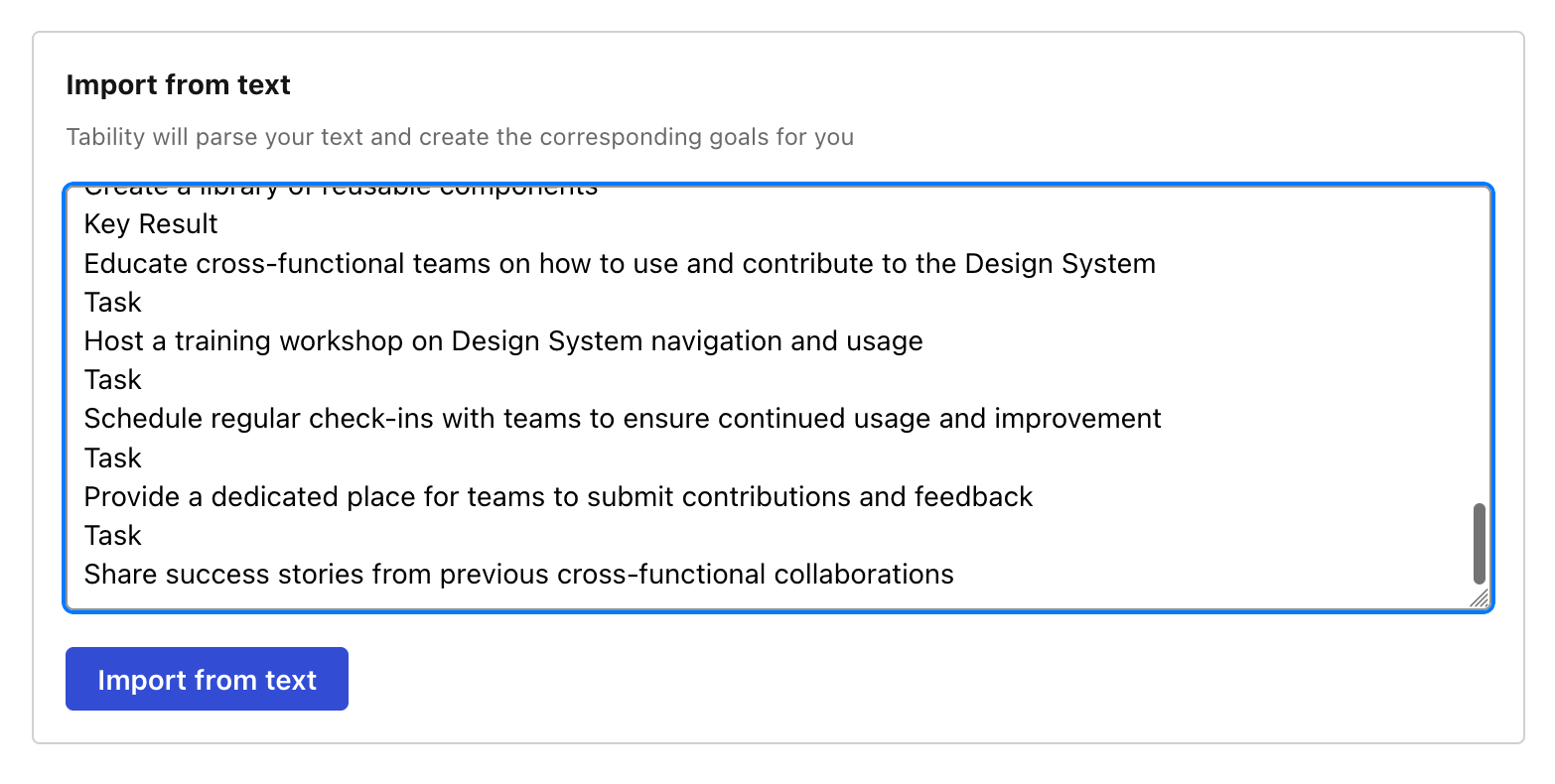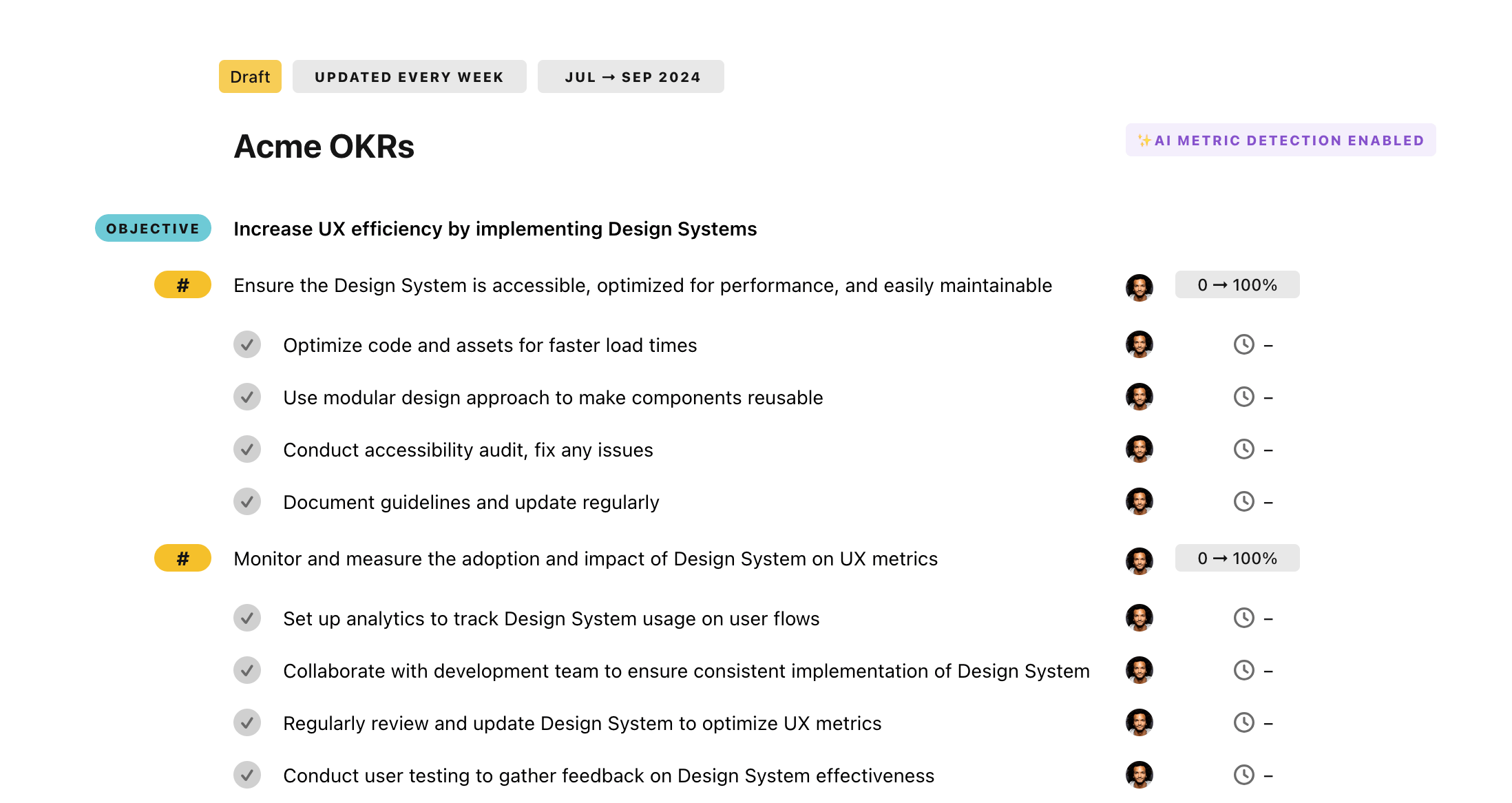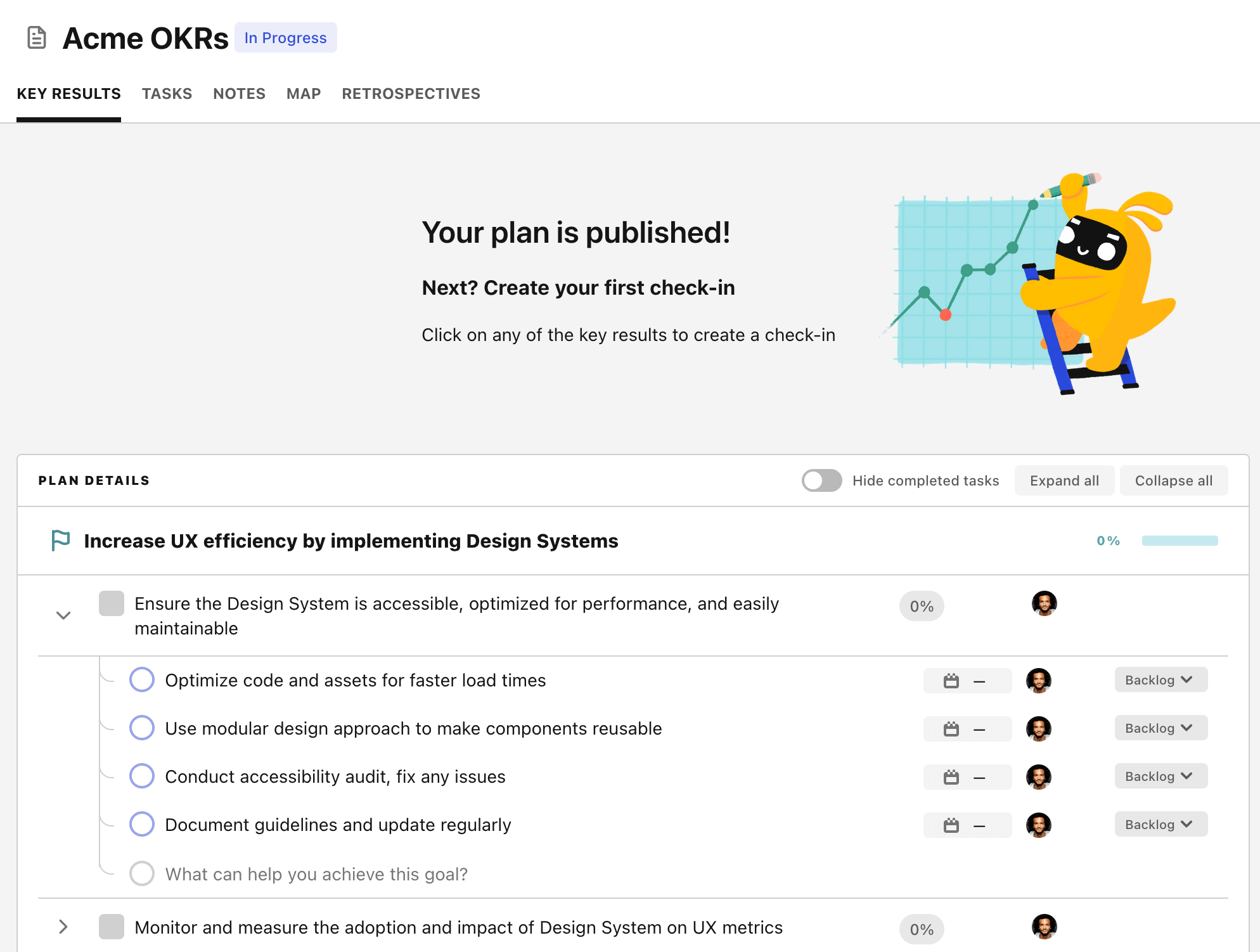OKR template to optimize data-driven automation in customer support
Your OKR template
The second objective involves improving response times by 15% through AI automation. The initiatives to attain this outcome are through continuous AI monitoring and optimization, implementing AI in customer service operations, and providing the team with the necessary training on AI-enhanced tools.
The OKR also targets a reduction in customer support complaints by 10% via data-focused strategies. To achieve this, an analysis of the existing customer complaint data will be undertaken. This data will inform subsequent changes and help identify areas that require improvement.
Ultimately, the OKR focuses on utilizing robust analytics and the power of AI to streamline and enhance customer support services. The aim is to facilitate speedier responses and lessen customer complaints significantly.
ObjectiveOptimize data-driven automation in customer support
KRImplement 2 new data analytics tools by end of quarter
Train staff on new tools usage
Purchase and install selected tools
Research and choose top two data analytics tools
KRImprove response time by 15% using AI automation
Monitor and optimize AI performance continually
Implement AI automation in customer service operations
Train employees on AI-enhanced tools to speed responses
KRReduce customer support complaints by 10% through data-focused strategies
Analyze current customer complaint data
Implement changes based on data analysis
Identify frequent complaint areas for improvement
How to edit and track OKRs with Tability
You'll probably want to edit the examples in this post, and Tability is the perfect tool for it.
Tability is an AI-powered platform that helps teams set better goals, monitor execution, and get help to achieve their objectives faster.
With Tability you can:
- Use AI to draft a complete set of OKRs in seconds
- Connect your OKRs and team goals to your project
- Automate reporting with integrations and built-in dashboard
Instead of having to copy the content of the OKR examples in a doc or spreadsheet, you can use Tability’s magic importer to start using any of the examples in this page.
The import process can be done in seconds, allowing you to edit OKRs directly in a platform that knows how to manage and track goals.
Step 1. Sign up for a free Tability account
Go tohttps://tability.app/signup and create your account (it's free!)
Step 2. Create a plan
Follow the steps after your onboarding to create your first plan, you should get to a page that looks like the picture below.

Step 3. Use the magic importer
Click on Use magic import to open up the Magic Import modal.
Now, go back to the OKR examples, and click on Copy on the example that you’d like to use.

Paste the content in the text import section. Don’t worry about the formatting, Tability’s AI will be able to parse it!

Now, just click on Import from text and let the magic happen.

Once your example is in the plan editor, you will be able to:
- Edit the objectives, key results, and tasks
- Click on the target 0 → 100% to set better target
- Use the tips and the AI to refine your goals
Step 4. Publish your plan
Once you’re done editing, you can publish your plan to switch to the goal-tracking mode.

From there you will have access to all the features that will help you and your team save hours with OKR reporting.
- 10+ built-in dashboards to visualise progress on your goals
- Weekly reminders, data connectors, and smart notifications
- 9 views to map OKRs to strategic projects
- Strategy map to align teams at scale